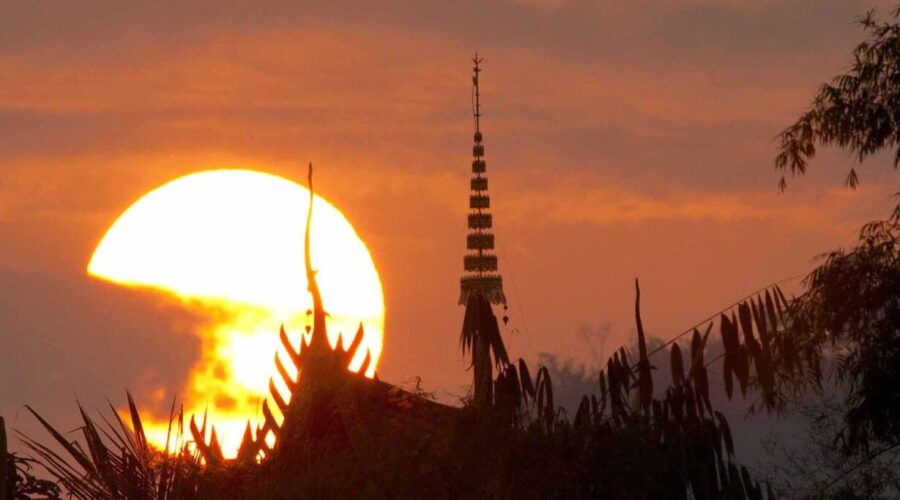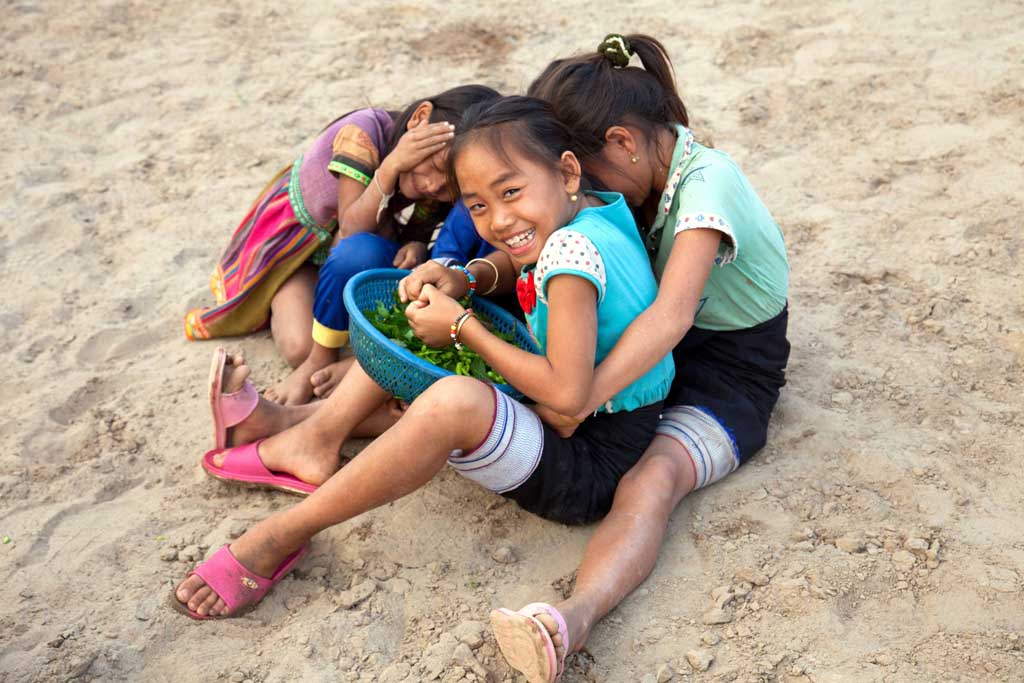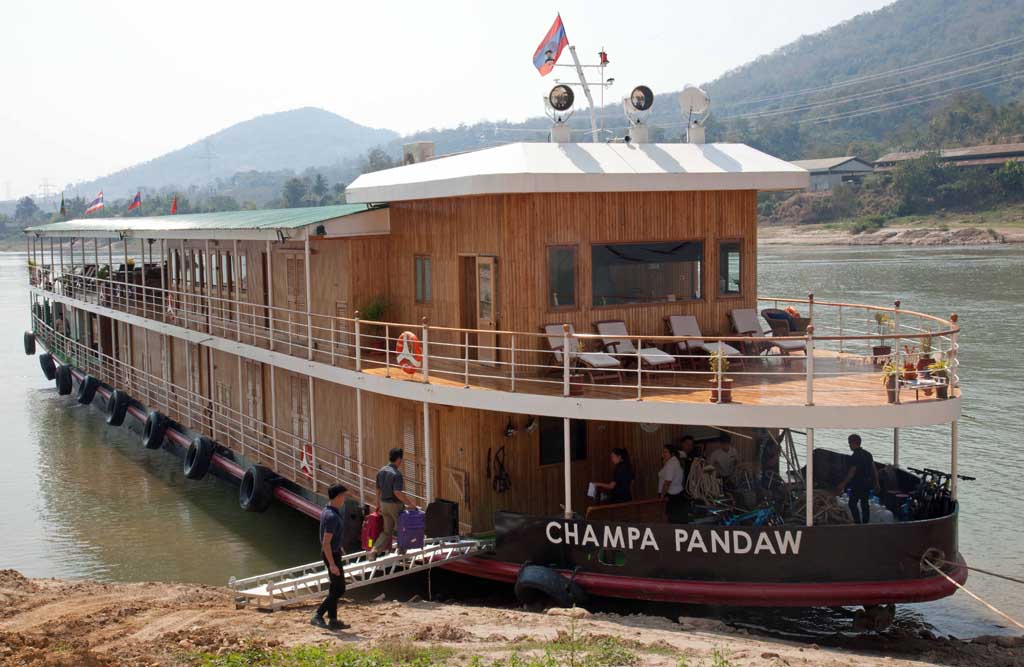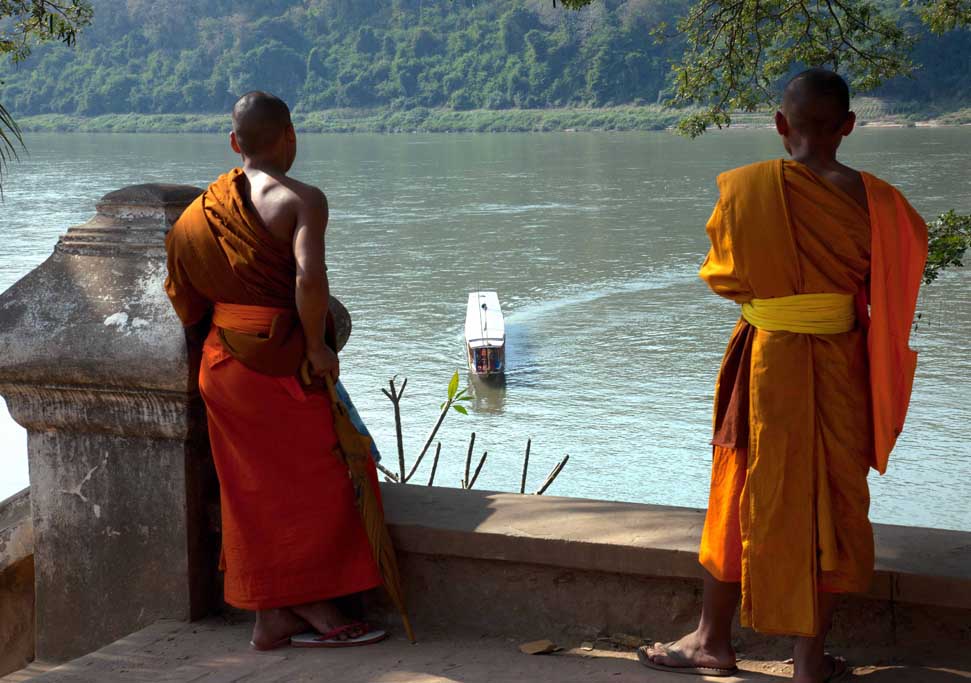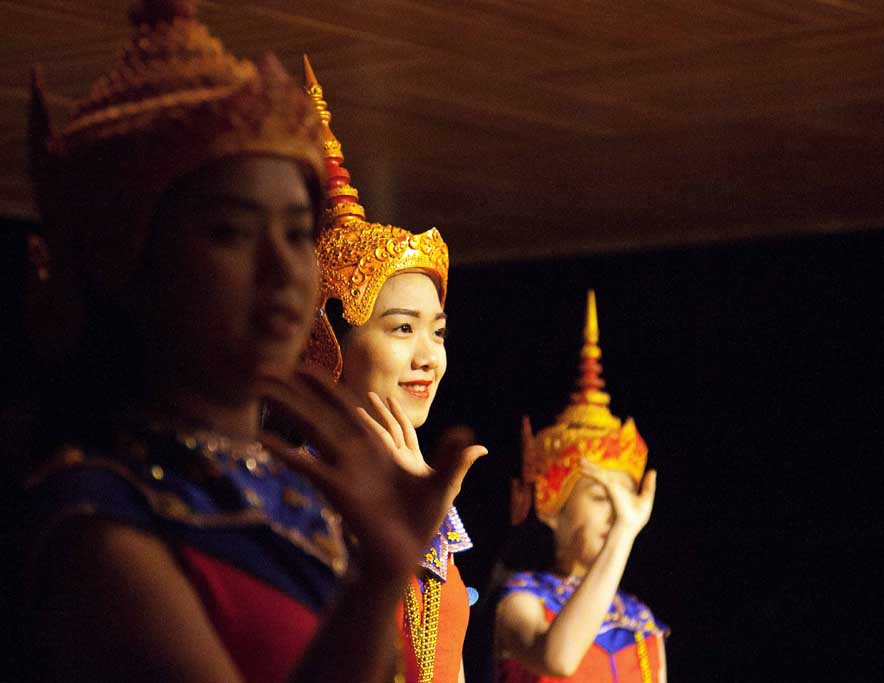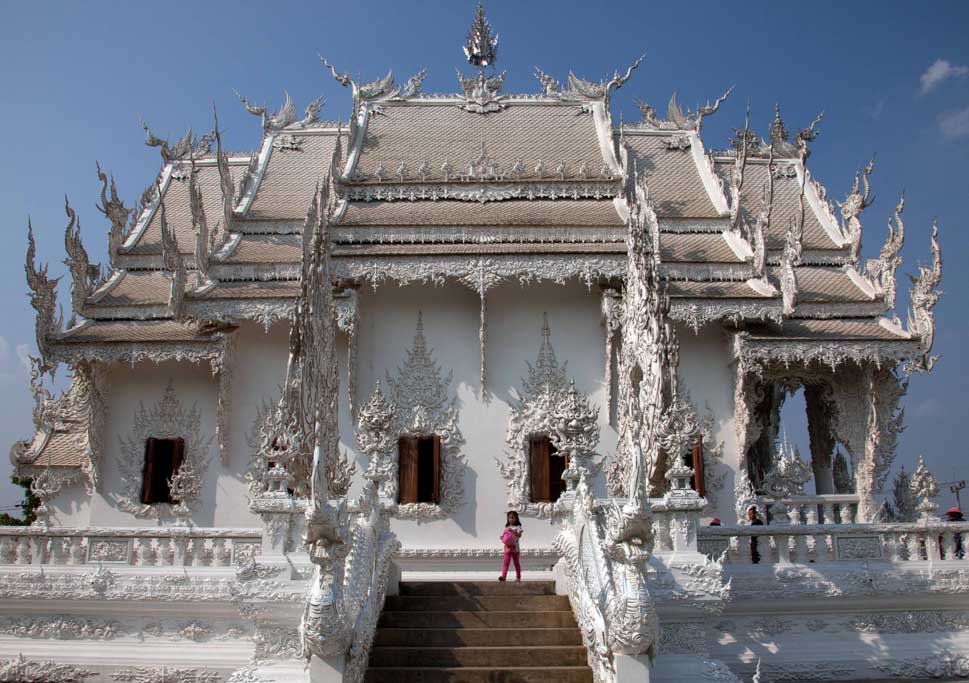Cruising the Mekong to the Golden Triangle
Award-winning travel writer John Borthwick muses on cruising the Mekong River from Lao to northern Thailand with Pandaw Cruises.
“We think kids are old enough to go to school when they can reach over their head and touch their opposite ear,” says the young Lao schoolteacher at Ban Phar Leib village on a remote stretch of the Mekong River.
A gaggle of healthy Lao kids lines-up in front of their two-room school to lustily sing us their national anthem. After we distribute pens and notebooks (and no sweets) to the grinning youngsters they escort us back to the riverbank where our ship, Champa Pandaw waits.
We’re cruising the Mekong River from Vientiane, capital of Lao, to northern Thailand, on a 1000km, 10-day journey. The Champa is a flash reincarnation of the classic Irrawaddy Flotilla steamer, all teak and brass, aircon and ensuites, gin and tonic.
The Mekong, Asia’s “Big Muddy”, tumbles from heaven to earth, from Tibet to the South China Sea, coursing 4300 km through six countries. The mid-section of its journey, the 700-km passage through landlocked Laos, sees whirlpools and reefs gives way to tranquil, sunny reaches, and then to narrow gorges and mazes of sandbanks.
We go ashore often, our first visit being to the former French administrative town of Pak Lai. A hammer-and-sickle flag is a reminder of the system of government here. The Lao Peoples Democratic Republic (the country’s official name) embodies a wondrous, multi-layered oxymoron — one-party democratic communist capitalism.
Next day, on rounding a bend in the river we find our way blocked by the huge, new Sayaburi hydroelectric dam. Laos, resource-poor but for its Mekong waters, has two dams under construction and seven more proposed. Nicknamed “the battery of Southeast Asia,” it will sell 95 percent of the Sayaburi power to neighbouring Thailand. We slip into a lock on the flank of the dam and climb a water stair, so to speak.
The Mekong is a liquid highway, the eternal “route one” of Southeast Asian trade and migration. Our captain, 62-year old Xieng Souk reads the river’s whorls like a palmist might view a hand. No electronics for him, just eyes that for 40 years have studied every braided channel, bar and dragon-toothed shoal in the river.
The ship’s 23 passengers are roughly equal numbers of British, Americans, Australians, Swiss and French. On land we visit schools (some, sadly, with no teacher), small wats, markets and local weavers. It’s a water margin world of wood smoke, bamboo and thatch, plus satellite dishes and mobile phones.
On surprisingly cold mornings we wake to find dense mists cloaking the river. And then, 300 km north of Vientiane, we hit the tourist mecca of Luang Prabang. With its 32 temples, this motherlode of Buddhism, French heritage and royal Lao history is one of the best-preserved colonial towns in Asia. At dawn monks drift through its UNESCO-protected streets, accepting food donations from would-be merit-makers. A few hours later in trendy cafes along those same streets, international hipster baristas serve lattes at international prices to flashpackers.
Luang Prabang’s golden-roofed wats glitter against the river’s slow-boat tide. We linger for two nights, with plenty to do. I love the 1904 Royal Palace, now the National Museum. Where else can you see a photo of laughing Ho Chi Minh and the last Lao King, Sisavangvattana dancing with two women?
Other than the gilded, 400-year old Wat Xieng Thong temple, for me the best spiritual trip in town is to find riverbank café and there contemplate a Mekong sunset over a chilled Beer Lao and fresh satays. The most anomalous trip is to look across the road and see a World Heritage-listed massage parlour.
“I’ve got a signal!” calls someone. We rush to our i-Things. On a remote reach where probably no habitation has stood for millennia, suddenly we’re reeling-in emails, uploading stuff and being tube-fed news of the appalling world beyond — and trhen, just as suddenly the signal is mercifully lost.
Next day Thailand appears on the western bank, marked by, of all things, a miniature Dutch windmill. On the opposite Lao shore are thousands of hectares of banana plantations for export to China. We are approaching the Chinese Special Economic Zone, a vast concession in Lao where the dominant “economic activity” is a casino complex for FIFO gamblers.
There are no more villages now. We land at the border port of Ban Houay Xai not for the casino but for Immigration, to be stamped out of Lao. Then, across the river at Chiang Khong, Thailand, it is time to farewell our good ship Champa and to step ashore in the once-notorious Golden Triangle.
The old opium warlords and Kuomintang smugglers are long gone. The junction on the Mekong River where Myanmar, Laos and northern Thailand meet, known as the Golden Triangle, once had a hell reputation as a smugglers’ and scammers’ haven. Today, on the Thai side at least, cabbages have replaced poppies, navigation and tourism are the legit money earners, and a huge golden Buddha oversees the whole show. Nearby, the impressive Hall of Opium museum recalls the area’s shifty past.
This Mekong shore, from “the Triangle” at Sop Ruak down through the river towns of Chiang Khong and Chiang Sean, is one of the most rewarding regions of Thailand for visitors seeking authenticity. Here is Thailand at home to its self.
To reach it, fly from Bangkok to Chiang Rai. Check out the town’s extraordinary “White Temple”, the crystalline, Disney-like Wat Rong Khun, and then drive east to the Mekong. Among the best accommodation on the river is the Anantara Golden Triangle Resort, whose acclaimed Elephant Camp sets the standard for ethical interactions with elephants, and, further south near Chiang Saen, the absolute Mekong-front chalets of tranquil Rai Saeng Arun resort.
LAO READING: A Great Place to Have a War by Joshua Kulantzick; Stalking the Elephant Kings and The Bamboo Palace by Christopher Kremmer.
The writer was a guest of Pandaw Cruises and Tourist Authority of Thailand. Story first published in The Weekend Australian.

